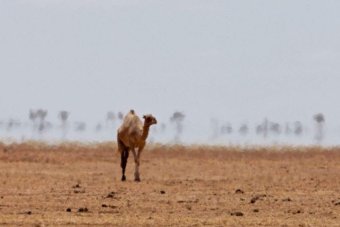Drought-stricken Queensland endures dry, warm winter

Queensland has just come out of a much warmer and drier winter than normal, with much of the drought-stricken state receiving almost no rain for the whole season, according to the Bureau of Meteorology (BoM).
“While winter is typically a dry-time season it’s been even drier than normal,” BoM forecaster Dean Narramore said.
“The northern interior, central interior and even inland south-east Queensland all saw rainfall numbers of below to very much below average … especially around Charters Towers.
“Charters Towers has only come in with around 10 millimetres for winter when they normally average 60.
“Even some inland areas like Cloncurry and Century Mine only had around 10 or 12 millimetres for the entire winter.
“Burketown only had half a millimetre.”
Other particularly parched areas included Emerald, Moranbah and Longreach.
“Merrivale had its driest August — only 0.2 millimetres there and that’s up in northern Queensland,” Mr Narramore said.
The only places to record average to slightly-above-average rainfalls were the Maranoa, Warrego and western parts of the Darling Downs, along with Cairns and the peninsula region.
Almost entire state had above average temperatures
Queensland’s winter temperatures also defied the norm, with not even a rare snowfall stopping the mercury from climbing higher than usual.
“Almost the entire state had not only above average [temperatures], but definitely our inland friends… we’re talking Gulf Country, Longreach, out to around Townsville and Mackay, had very much above average temperatures for the winter season,” said Mr Narramore.
The hottest day was recorded on August 24 at Century Mine where the mercury reached 37.3 degrees [Celsius], or about five degrees above average.
“Looking at the stats for Queensland, many areas pretty much averaged between one and two degrees above average for the whole winter season,” he added.
Brisbane bucked the trend, with its winter average of 22.1C coming in just 0.2C below normal.
Stanthorpe in southern Queensland endured the state’s coldest night on August 7, when the mercury plummeted to -5.1C.
Unsurprisingly nearby Applethorpe had Queensland’s chilliest day with a maximum of 4.8C when snow blanketed the town on July 17.
Original article appeared on ABC News, 2 September 2015 (link)


